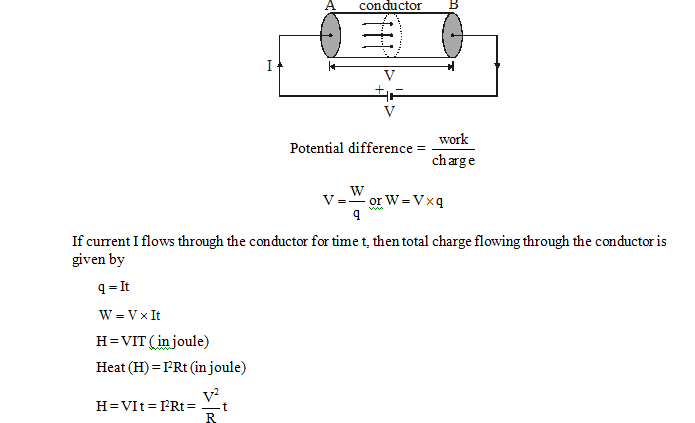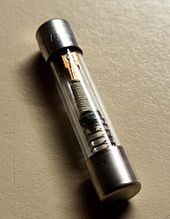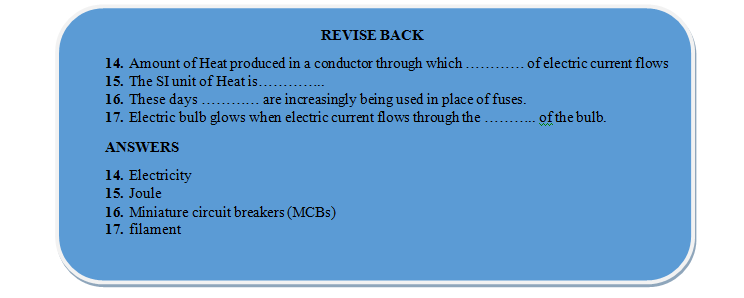
Heating Effect Of Electric Current
Electric Currents and Circuits of Class 7
Amount of Heat produced in a conductor through which electricity of electric current flows

APPLICATION OF HEATING EFFECT OF CURRENT
- Electric heater, electric iron and water heater etc. work on the heating effect of current.
- Electric bulb glows when electric current flows through the filament of the bulb
- electric fuse in the electric circuit melts when large current flows in the circuit.
The amount of heat produced in a wire depends on its material, length and thickness. Thus, for different requirements, the wires of different materials and different lengths and thicknesses are used. The wires used for making electric circuits do not normally become hot. On the other hand, the elements of some electric appliances become so hot that they are easily visible. The filament of an electric bulb gets heated to such a high temperature that it starts glowing. If a large current passes through a wire, the wire may become so hot that it may even melt and break.
ELECTRIC FUSES
Wires made from some special materials melt quickly and break when large electric currents are passed through them. These wires are used for making electric fuses. In all buildings fuses are inserted in all electrical circuits. There is a maximum limit on the current which can safely flow through a circuit. If by accident the current exceeds this safe limit, the wires may become overheated and may cause fire. If a proper fuse is there in the circuit, it will blow off and break the circuit. A fuse is thus a safety device which prevents damages to electrical circuits and possible fires.

These days Miniature circuit breakers (MCBs) are increasingly being used in place of fuses. These are switches which automatically turn off when current in a circuit exceeds the safe limit. You turn them on and the circuit is once again complete.










